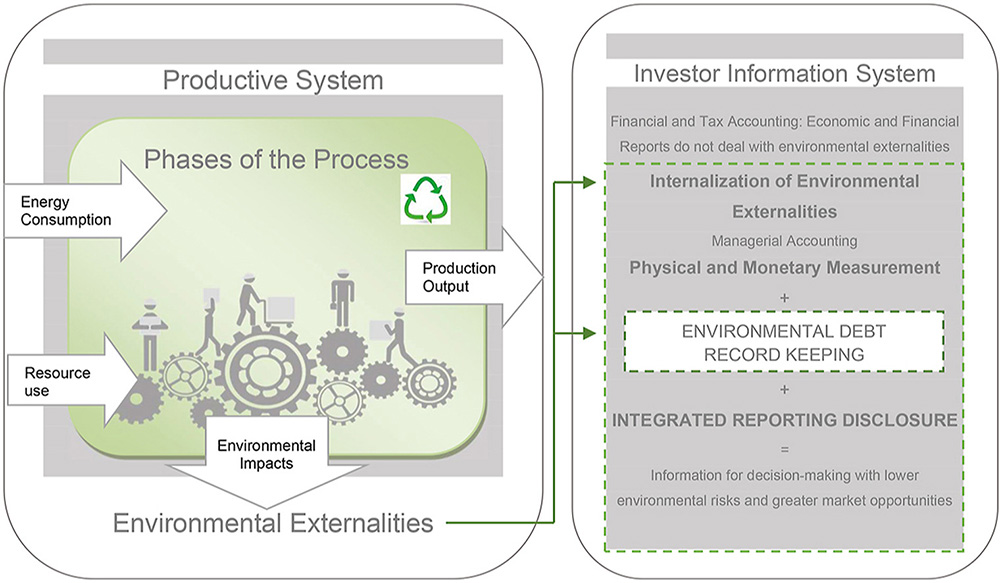First published at Science Direct
Highlights
- A compilation of the methods for measuring environmental externalities is obtained from a systematic literature review process.
- A new method is proposed to measurement and evidencing of environmental debt.
- The method is tested in the broiler production in Brazil.
- The method provides information on the real value of the business, considering the environmental result.
Responsible use of natural resources is an important social and political issue, and as such, it is an essential factor in business decision-making. In this scenario, accounting practices need to include valuation and analysis of external costs and environmental debts as part of the information available to decision-makers. Therefore, this study focuses on proposing a method to measure and evidence the Environmental Debt (ED) of a productive system. For this purpose, Design Science Research was used to conduct the research. Its main result makes possible to propose the Measurement and Evidencing of Environmental Debt Method (MEED). The method was developed from a combination of resources identified in the literature, propositions of research groups, from consulting market methods and international organizations involved with the recognition of prices of natural resources. The results of applying MEED reveal the valuation and disclosure of external costs and environmental obligations from the internalization of environmental externalities related to the primary objective of accounting, namely, valuation of equity. The method was tested in the poultry sector, specifically the broiler production, and evaluated by experts in multidisciplinary areas. Environmental externalities are present in the analyzed system, negatively affecting equity.





